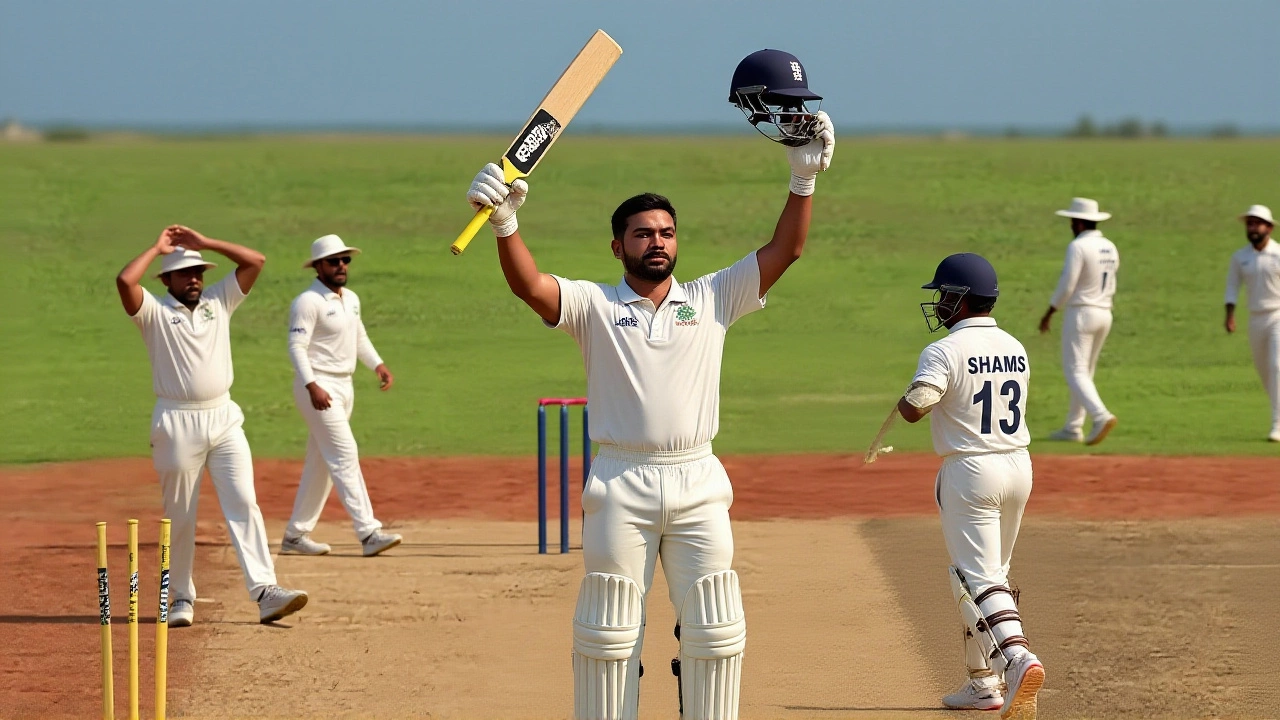When Sarfaraz Khan, the 27‑year‑old Mumbai batter, smashed a brisk 111 off 112 balls against Haryana on August 26, 2025, the cricket world took notice. The innings, played at a Chennai ground during Day 1 of the Buchi Babu Invitational Tournament, came just eight days after he belted an unbeaten 138 against the TNCA XI. Both knocks featured a flurry of fours and sixes, sending a clear signal to the Board of Control for Cricket in India (BCCI) that the left‑handed hitter is ready for the next level.
Tournament Overview and Mumbai’s Recovery
Set against the sweltering August heat in Chennai, the Buchi Babu Tournament gathers 16 teams from across the south. The competition runs from August 18 to September 9, with matches spread over several city venues. Mumbai, represented by the Mumbai Cricket Association, entered the Haryana clash in a sticky spot: 84 for four after an opening stand of 69.
Opening partners Divyaansh Saxena (46) and Musheer Khan (30) could not sustain momentum, and the middle order teetered. That’s when Sarfaraz Khan steadied the ship, linking up with wicket‑keeper Hardik Tamore for a 117‑run partnership. Tamore’s 39 off 73 balls provided a steady finish, while Khan’s aggressive strokes—nine fours and five sixes—cut the required run rate dramatically.
By stumps, Mumbai posted 346 for nine, with lower‑order contributions from Shams Mulani (50*) and Tanush Kotian (48). The dismissal came at the hands of Haryana’s bowler Parth Vats, who finally broke the partnership after a spell of tight overs.
Back‑to‑Back Centuries: Numbers that Speak
What makes Khan’s feat stand out isn’t just the runs, but the speed. Wisden noted he reached the hundred in just 99 balls during the Haryana innings. Earlier in the tournament, at the Gojan College Ground, he hammered 138 off an undisclosed number of deliveries, peppering the field with ten fours and six sixes. Together, the two knocks amount to 249 runs in eight days—a strike rate hovering around 115.
For context, his career Test numbers sit at 371 runs from 11 matches, averaging 37.10 with a top score of 150. Yet, after being omitted from India’s Anderson‑Tendulkar Trophy squad in June, Khan’s domestic fireworks have become his résumé for re‑entry.
Selectors Take Note: Ajit Agarkar and Gautam Gambhir Weigh In
India’s selection panel, headed by former fast bowler Ajit Agarkar, has been under pressure to justify its choices for the upcoming West Indies Test series starting October 2, 2025. Head coach Gautam Gambhir has publicly emphasized the need for “hard‑hitting, adaptable middle‑order batsmen” capable of rotating the strike against pace‑friendly Caribbean pitches.
Both men were quoted in the Hindustan Times on August 26 saying they were “watching the tournament closely” and that “consistent domestic performances like Khan’s cannot be ignored when final squad decisions are made.” The board’s cricket centre at Wankhede Stadium in Mumbai will convene in late September to finalize the XI.
Reactions from Peers and Opponents
Hardik Tamore, who shared the partnership, praised Khan’s timing: “He’s fearless in the slog‑sweep zone, and that’s exactly what we need at the top of the order.” Haryana spinner Nikhil Kashyap, who claimed four wickets for 20 runs, admitted, “I tried to bowl him out, but his footwork was impeccable.”
Meanwhile, Mumbai’s coach, Anil Kumble, highlighted the strategic rotation policy that saw Khan sit out the subsequent match against Bengal, giving other players a chance to sharpen their skills. “It’s about depth, not just the headline act,” Kumble said.
What This Means for the West Indies Series
The West Indies Test series will be fought on varied surfaces—from the fast tracks at Chepauk in Chennai to the slower pitches at Eden Gardens in Kolkata. Analysts at India Today argue that a player of Khan’s caliber, who can accelerate the scoring rate and negotiate both spin and pace, could be the X‑factor in the middle order, especially if senior players like Virat Kohli or KL Rahul need a breather.
Historically, India’s success in Caribbean conditions has hinged on aggressive batting in the second innings. If Khan secures a spot, his “back‑to‑back century” form could translate into quick‑fire 70s or 80s, giving India the flexibility to chase larger totals or set daunting targets.
Historical Context: Domestic Explosions Leading to International Comebacks
Cricketing lore is dotted with the likes of Shivnarine Chanderpaul’s domestic resurgence in 2003 that earned him an India recall, and more recently, Rishabh Pant’s 2022 Ranji heroics. Khan’s current trajectory mirrors those patterns: a player overlooked at the senior level, using a high‑profile domestic tournament to force a second look.
Fans remember that the Buchi Babu Tournament, launched in 1972, has often acted as a springboard for Indian talent. Not only does it give fringe players a platform, but the tournament’s timing—just before the international season—means performances are fresh in selectors’ minds.
Frequently Asked Questions
How does Sarfaraz Khan’s form affect his chances for the West Indies Test squad?
Khan’s twin centuries, scored at a strike rate above 110, demonstrate his ability to dominate pace and spin alike. With the selectors publicly stating they value aggressive middle‑order batsmen, his recent performances place him squarely in the conversation for a spot in the XI that departs for the Caribbean in early October.
What role did the Buchi Babu Invitational Tournament play in highlighting domestic talent?
The tournament, featuring 16 teams across Chennai venues, serves as a high‑stakes platform just before India’s international window. Its compact schedule forces players to perform consistently, making standout innings like Khan’s especially visible to the BCCI’s selection panel.
Why were Ajit Agarkar and Gautam Gambhir mentioned in relation to Khan’s performances?
Agarkar, as chief selector, and Gambhir, as head coach, are the decision‑makers for the upcoming Test squad. Both have publicly emphasized the need for aggressive batting options, and their comments after Khan’s innings underline how his form aligns with their strategic priorities.
What are the main challenges India faces in the West Indies series?
Caribbean pitches tend to be faster and offer more bounce, especially in the early sessions. India will need a blend of technique and power to handle the West Indian pace attack. A batsman like Khan, who can accelerate when needed, could help balance aggression with stability.
How did other teams perform on the same day as Khan’s century?
On August 26, Maharashtra’s Ruturaj Gaikwad piled 133 runs, while Chhattisgarh’s bowlers bowled out the TNCA President’s XI for 266. Bengal also registered a five‑wicket haul from Rahul Prasad. These parallel performances added to a day of high‑scoring cricket across the tournament.

